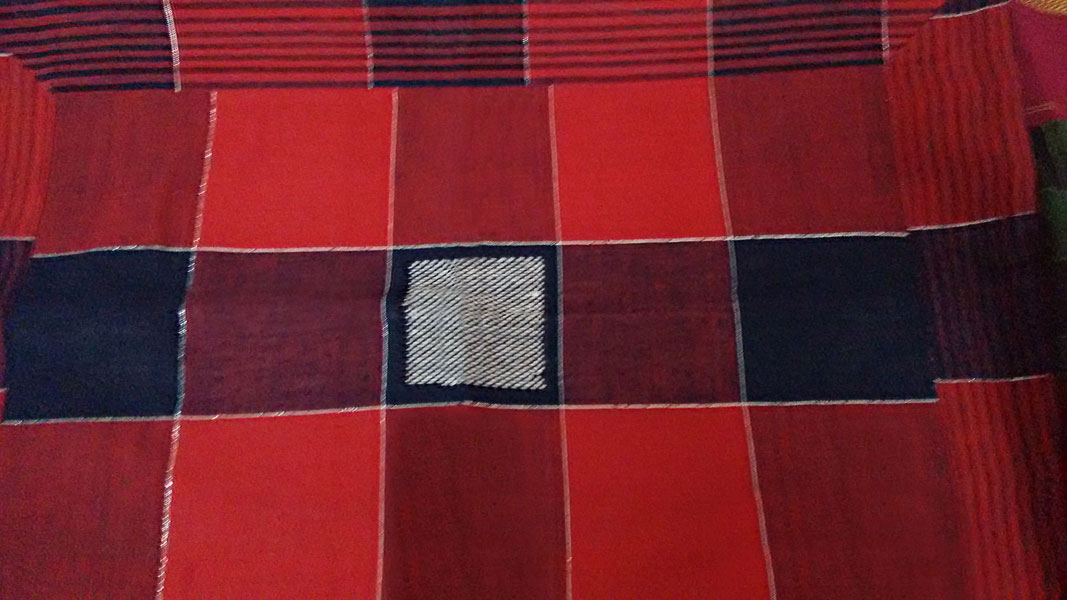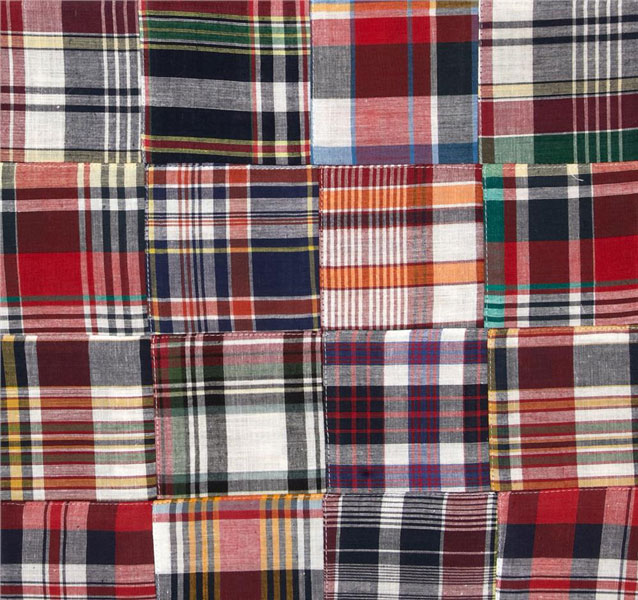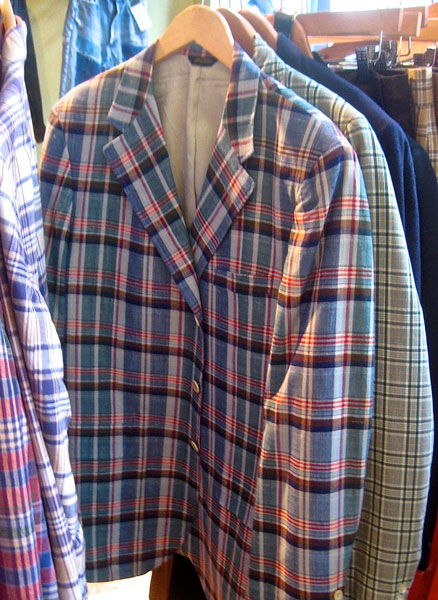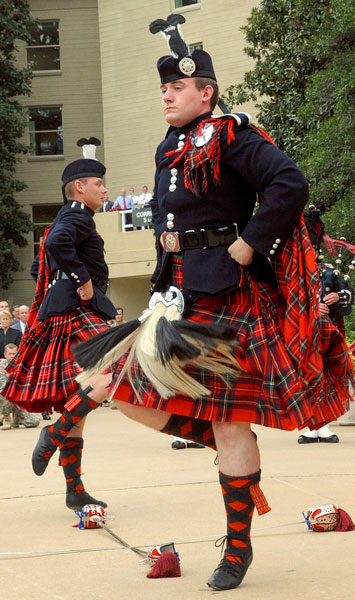The colourful fabric called Madras
How many of us know that textiles are intertwined with the history of the British rule in India? Indian textiles have created turning points in history. Gandhiji cremated foreign fabrics in an act of defiance, collecting them from sophisticated Indians who wanted to be on the same page as the Britishers. It drained the British coffers and marked the beginning of the end of colonial rule in India.
Again, it was handlooms that moved Francis Day into choosing Madras as the new British settlement. He was impressed with Madras “being the only place for paintings, and a great store of longcloth and Morris.” He was of course referring to hand block-printed chintz, and Morris was blue cotton cloth. On his return from a tour of the Coromandel Coast, he was showed around by the local Naik, Damarla Venkatadri. Day met merchants, painters and weavers, examined a variety of fabrics and what impressed him was the price, as the cloth was 15 per cent cheaper than that at Armagaon, about 35 miles north of Pulicat.
The East India Company wished to set up a factory on the East Coast, and it had zeroed in on Armagaon. Since the calico, which was in great demand, was locally produced and of poor quality, the port could not be used for trade purposes and a new settlement had to be found. With the appreciable price difference of calicoes at Madraspatnam and excellent trade prospects, Francis Day decided on the new settlement — Madraspatnam. The rest is history, as Madras became an important port in colonial India. Madras was founded not for spices and gold but for cloth.
The brides of West Africa, the Gold Coast and Ghana loved to have their gowns tailored from Madras Checks in the early 18th and 19th centuries.
Madras cotton was exported to Africa and the Middle East where it was converted into head wraps. More refined in the sixteenth century, hand block prints made their debut, until plaids came into fashion in the 1800s.
Madras Checks
Among the varieties of handloom fabric flooding the Indian market, a vital item of trade is the cloth known as Madras Checks, also called the Real Madras Handkerchief, George Cloth, Guinea Cloth, and Bleeding Madras. Woven in 60×40 count handloom, this vividly colourful fabric is essentially a plaid, with variations in stripes or solid squares, mostly in red, blue and white. The British merchants coined the RMHK (Real Madras Handkerchief) to describe the 8-metre-long, 36”-wide bolts of fabric which could be cut into three square kerchiefs. It is presumed that the name was a ploy that helped the exporters evade taxes levied on bales of fabric when it entered London.
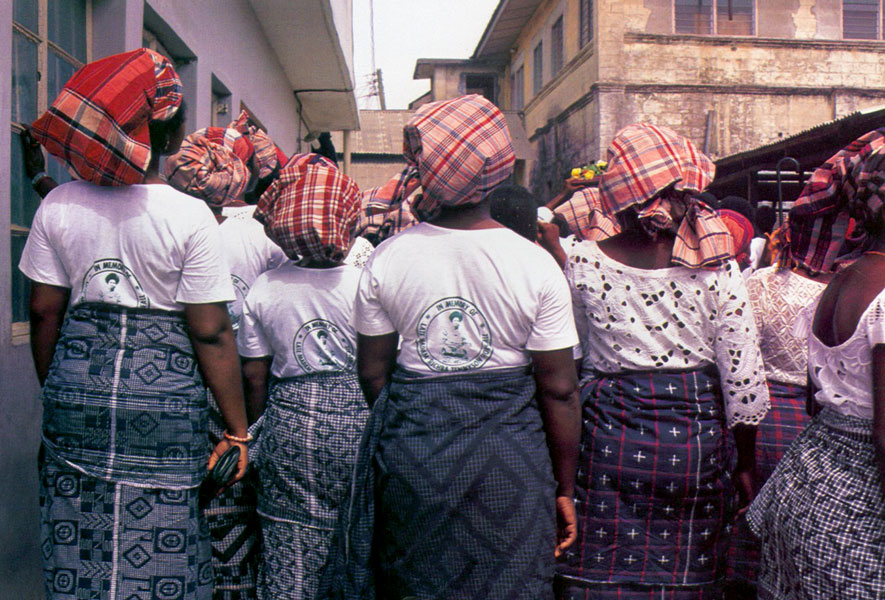
The Scottish regiments occupied Southern India in the 1800s, and legend has it that the plaid patterns were inspired by the Scottish tartan plaids, and the tartan craze which began when King George the IV visited Scotland in 1822.
With the paucity of authentic documentation, there are other theses as well. Textile scholar Jasleen Dhamija avers that plaid cottons existed in the south of Andhra Pradesh and Madras hundreds of years before the British came into India. She refers to the 16th century Portuguese records that describe the popularity of the checked scarves or rumaals among the Haj pilgrims, claiming that these rumaals originated in Masulipatnam, woven as ritual textiles for cleaning the face of the deities, prior to the Persians and Arabs taking them back with them to Mecca. These checks which were so much in vogue could have influenced the design staple for our Kancheepuram pattus (silks)!
Why Bleeding Madras? Every time it is washed the colour bleeds and the fabric assumes a new avatar without looking faded or dull. The warp was generally dyed in indigo and turmeric (yellow). And the indigo base combined with yellow produced green that ran on the weft when soaked in water creating new shades and solid colours.
During the 15th century, other trade routes carried the plaid cloth into West Africa where Madras Checks was used mainly for turbans and later became a totemic commodity among the Kalabari tribe in the Niger delta. Design scholar Sandra Lee tells us that the Madras Checks arrived in the area as early as 1400 via the Portuguese maritime trade routes. By the 18th century, the fabric was a valued commodity in the trans-Atlantic slave trade well into the 19th century.
Madras handkerchief
The Madras handkerchief was exported to London where it would be auctioned to traders who used it as an item for barter for slaves in West Africa. Next the RMHK reached the Caribbean and South America where it was used as headscarves among black women.
For 400 years the Kalabari, a small group of Ijo ethnic people in Nigeria, have been trading in the RMHK. An interesting fact is that the community was fused as it were with Indian textiles in daily and ceremonial life.
Madras fabric has a special presence in Kalabari life and is a symbol of a person’s journey from the womb to the tomb. Kalabaris call the fabric Injiri. It is part of the ceremony of the veneration of life. So much so that the brides of West Africa, the Gold Coast and Ghana loved to have their gowns tailored from Madras Checks in the early 18th and 19th centuries.
The Madras Checks cloth also forms an integral part of the funeral ceremony for the Kalabaris, and in the process called ede deis, when the walls and ceilings of the room are lavishly decorated. These cloths are preserved and loaned to others who would need them. The family status is assessed by the number, type and age of these cloths.
Coming to contemporary use of the Madras Checks, thanks to the preppy world’s love for the unusual and to the brilliant marketing, wearing plaids became a mark of affluence where the presence of slaves in South America was completely ignored. Machine-made imitation plaids were manufactured in Japan, Switzerland, England and France.
In the 1960s, the popularity of Madras Checks peaked, and in the Nigerian market, handloom checks were still imported under the name Real Madras Handkerchief, which was quite robust. In the 1970s, Nigeria imposed a ban on a variety of goods due to political instability and the import of RMHK collapsed.
Bleeding Madras was made popular by Captain CP Nair, founder of the Leela Group. In the fifties he showed an American exporter a fabric which was woven in Chennai for South Africa, using natural dyes, and one which would run colour and change form after every wash. The exporter ordered 10,000 yards and the cloth tailored into stylish garments sold at Brooks Brothers, New York.
The exporter threatened to sue Captain Nair when the fabric really bled, but the latter pointed out that he had warned him earlier. When the Editor of Seventeen magazine ran a story on Bleeding Madras, the first order was that of a million yards. They were woven all over Chennai
and later in Andhra Pradesh.
Resuscitating the market for handloom Madras would mean bringing in the textile’s cultural history and reintroducing it to the place that gave birth to it, not in another form like sarees or lungis, but as a fashion fabric which would find its niche in a global luxury market place.

